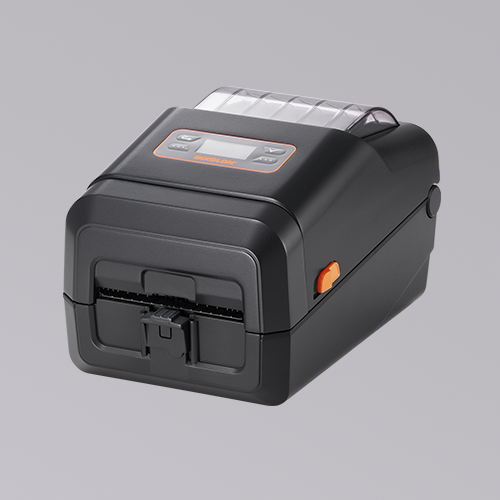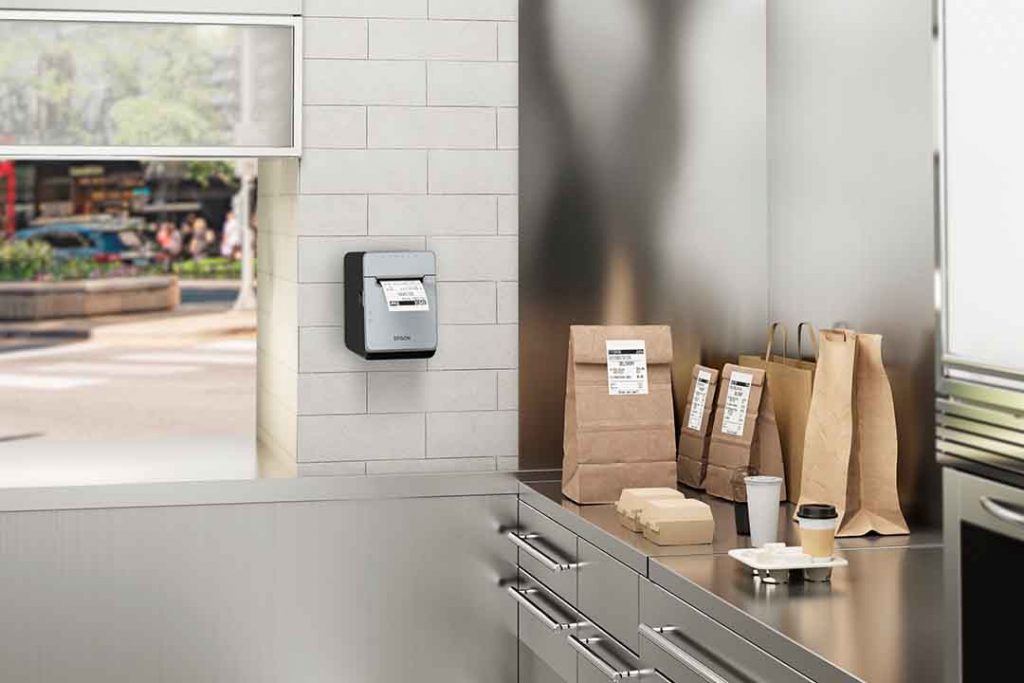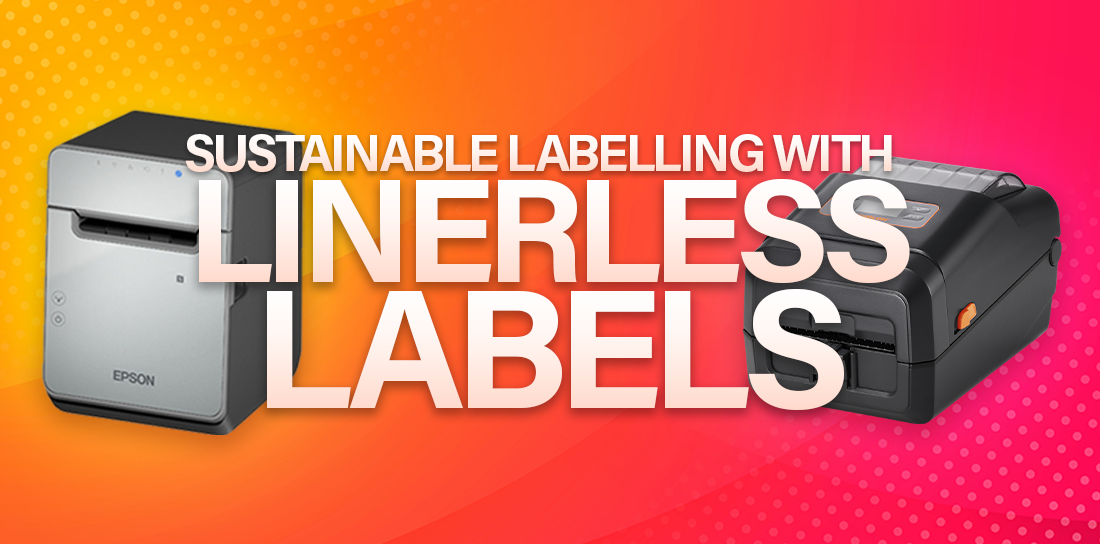In this guide, we explain how linerless labels provide a more sustainable alternative to traditional labelling materials. We also share examples of linerless label printers available on the market today that can offer a flexible, easy-to-integrate solution to more environmentally friendly label production processes.
Consumer demand for sustainable products is continuing to rise and consequently, the labelling industry is increasingly adapting to meet the growing requirements for environmentally friendly solutions.
An important development in recent years has been the growing popularity of linerless direct thermal labels. Traditionally, the liner (or backing paper) of a label is a layer of silicone-coated material, which allows the label to be released from the roll. Once the label has been applied, the backing paper is discarded and disposed of. Linerless labels are treated with a silicone release coating on the face of the label stock, which replicates conventional backing paper and enables them to be easily peeled from the label roll. As a result, linerless labels are supplied without backing paper.
The silicone liner is a material that is difficult to recycle and often ends up in landfill, whereas linerless labels eliminate backing paper waste. In addition to being more environmentally friendly than conventional labels, linerless labels also offer several other benefits, including accommodating a greater number of labels per roll (approximately 40 per cent). As a result, fewer changeovers are required and productivity is increased. Businesses can also reduce their inventory space and save on storage, material and delivery costs. Linerless labels, with their silicone coating, also offer increased protection against water and scuffing when compared to standard direct thermal labels.

Linerless labels can be used across a variety of applications including mobile price markdowns, weight scale labelling and shelf-edge labelling, as well as a multitude of warehousing requirements. They are also compatible with a variety of printers, including mobile printers where the label would be torn against the tear bar, as well as desktop printers with a cutter. With desktop models, the label is printed and cut, after which a sensor will detect once the label has been taken and the next label will be printed. The industry is increasingly witnessing the launch of printers that are specially designed to support the growing demand for linerless labels. For example, the Toshiba BV420D-GL linerless printer offers market leading print speeds of up to 7 inches per second (177.8 mm/s) and a maximum print width of up to 99 mm, while benefitting from a compact and sleek design with an intuitive user experience.

Meanwhile, the Bixolon XL5-40 features two long-lasting platen rollers to reduce the chances of label jams or the material curling, while offering the flexibility to print lengths from 30 mm to up to 1,000 mm. This model further benefits from print speeds of up to 6 inches per second (152 mm/s). Similarly, the Epson TM-L100, which has been specially developed for retail and hospitality businesses, is a compact linerless label printer that supports a range of media. Thanks to its embedded ePOS capacity, the TM-L100 can be easily integrated into existing POS systems. As the silicone liner is not required with any of these models, zero backing paper is sent to landfill, helping businesses to improve their carbon footprint.
Despite the many benefits linerless labels offer, cost has traditionally been a challenge in the past, however the price is now much closer to that of conventional labels, particularly if purchased in large quantities. Businesses will require a printer that is compatible with linerless labels, although some printers can be upgraded with non-stick platen rollers. Additionally, while it’s not practical to print a batch of labels, linerless label printers are ideal for businesses using a peel and present system or a mobile printer, where labels are often printed one at a time.

While the strength of the adhesive has typically been a problem in the past compared to conventional labels, recent offerings from Zebra and Toshiba/UPM Raflatac have overcome this. Furthermore, some linerless labels, including many offered by Zebra and UPM Raflatac, benefit from a dry edge, meaning the adhesive doesn’t go right to the edge of the material. This helps to prevent adhesive build-up and reduces the chances of label jams.
Linerless labels offer a more sustainable alternative to conventional labelling materials, reducing production downtime, boosting productivity and increasing savings.
For more information on AM Labels Limited, please call the sales team on 01536 414 222 or email: [email protected]

